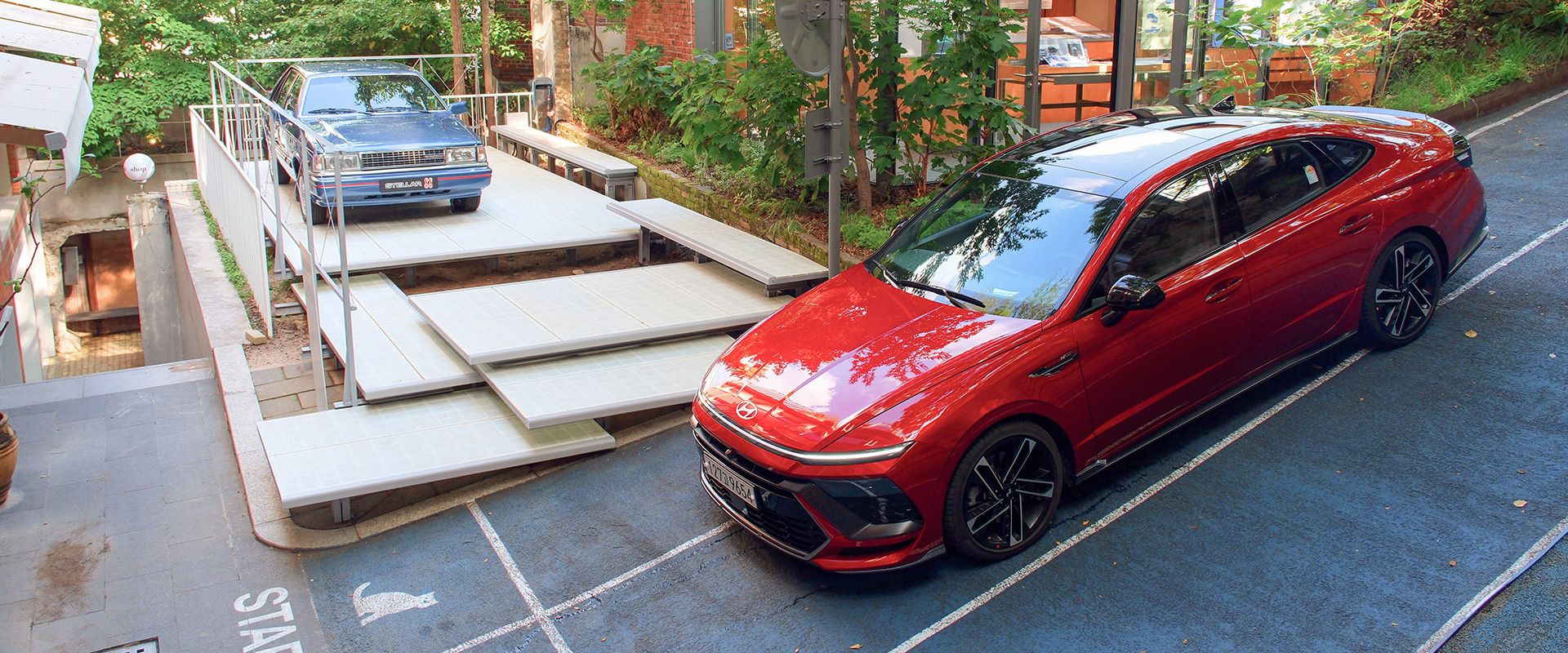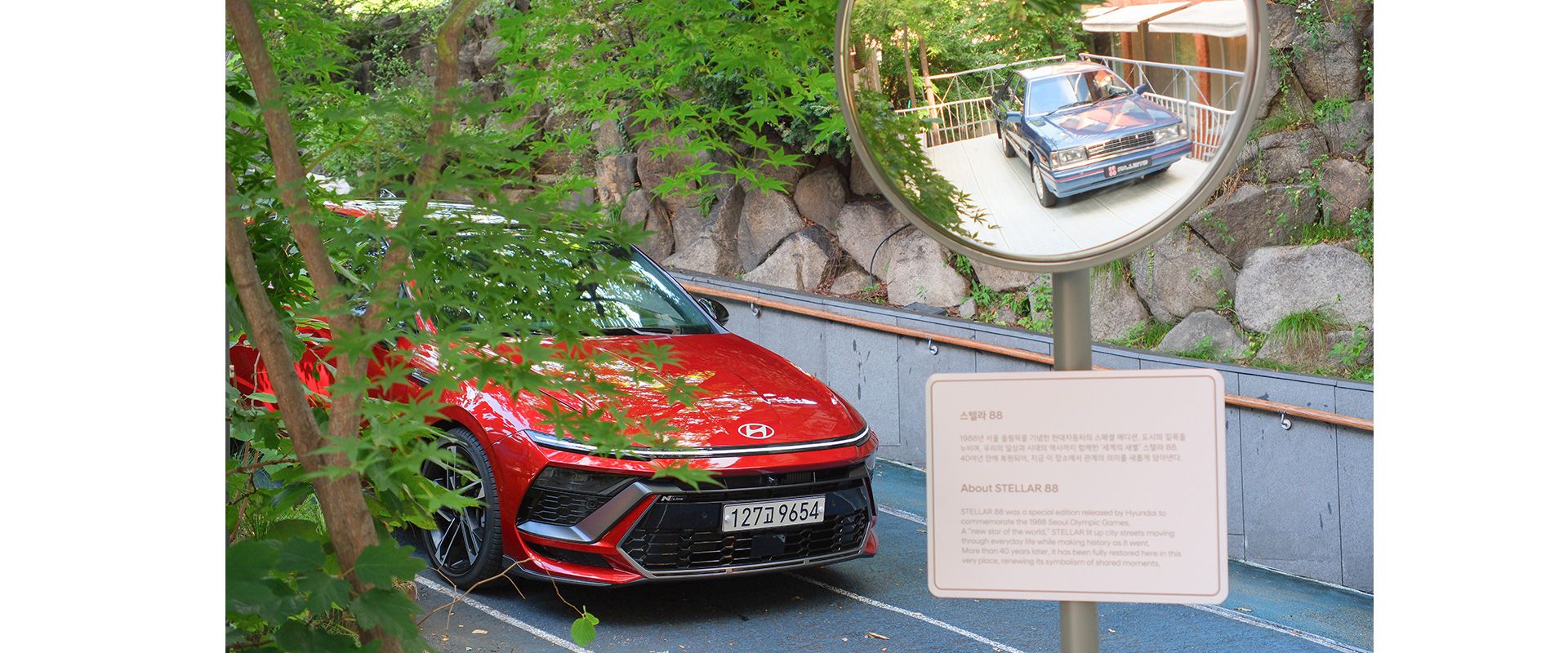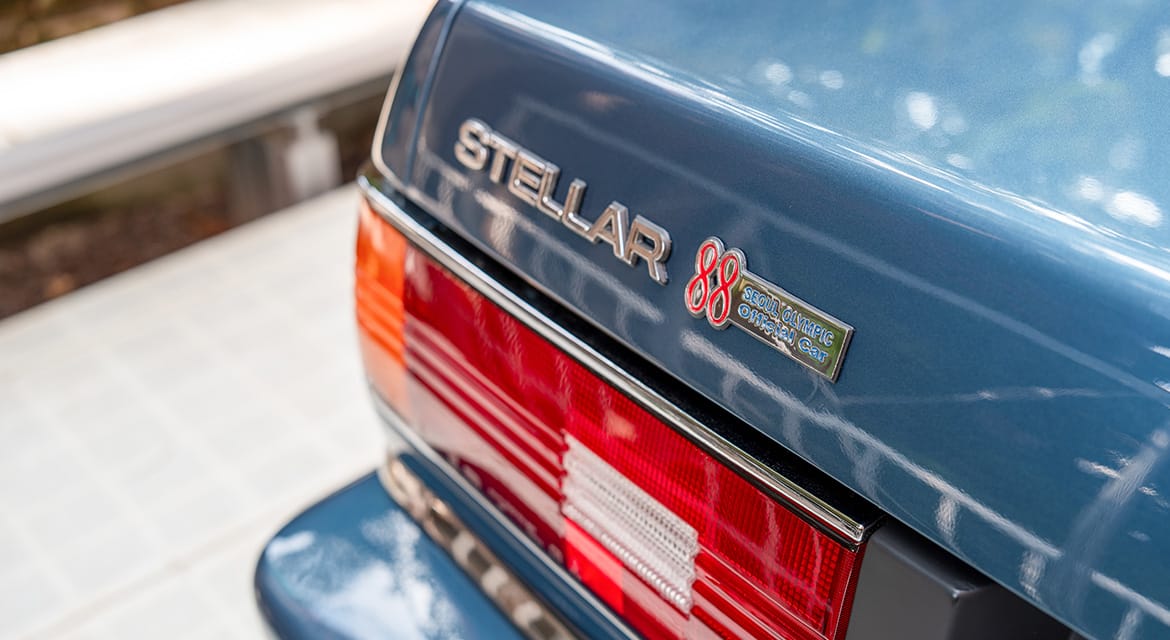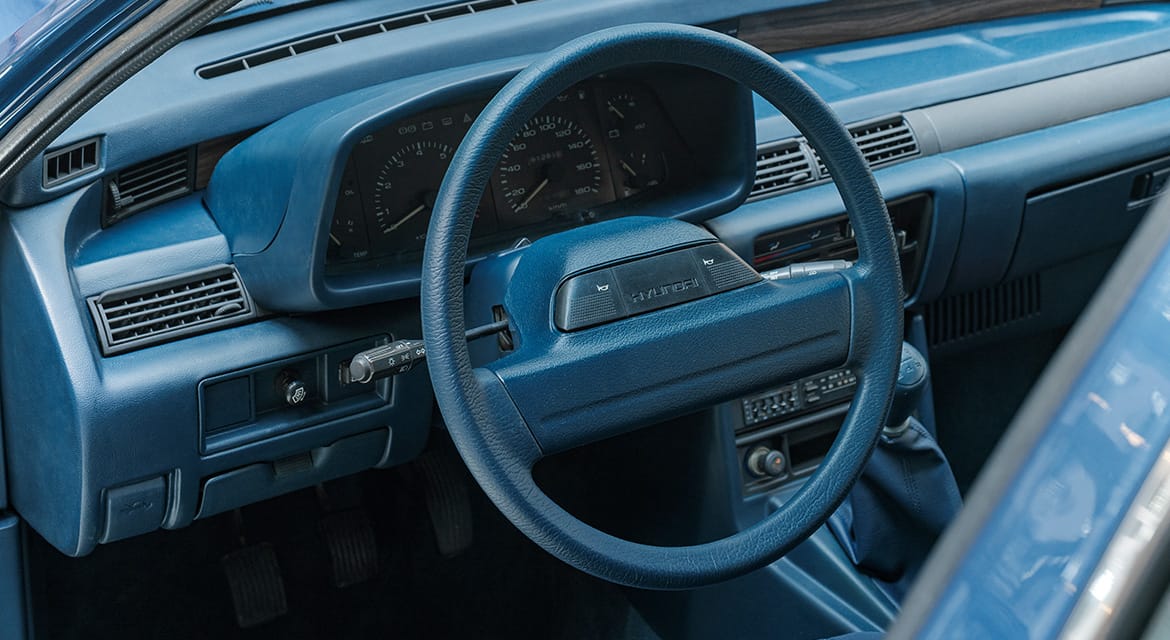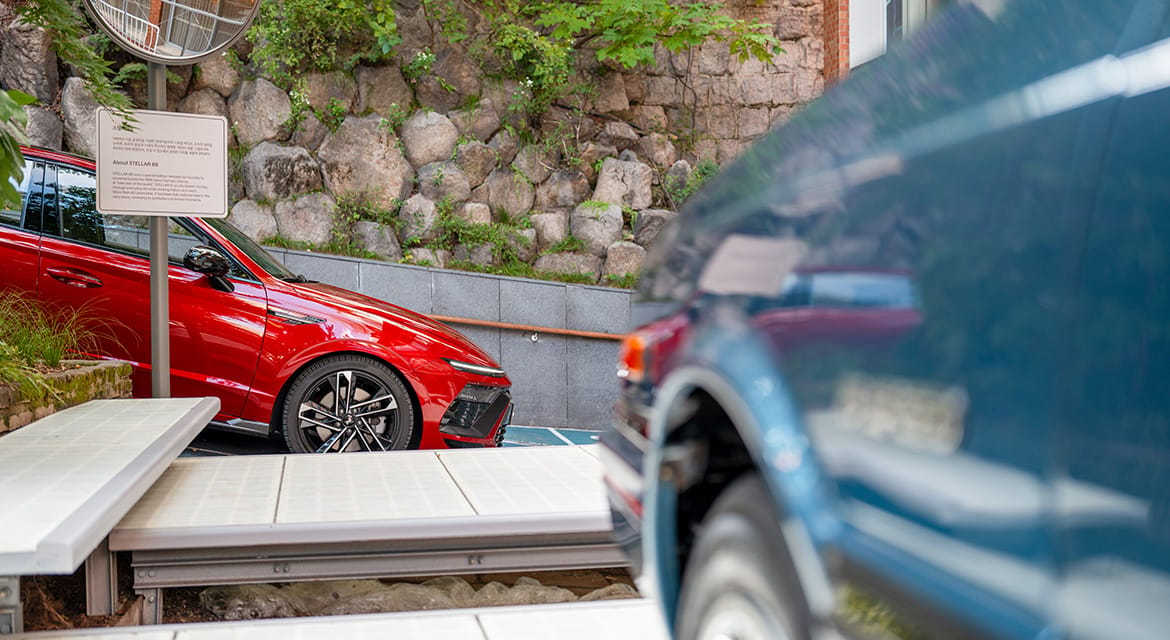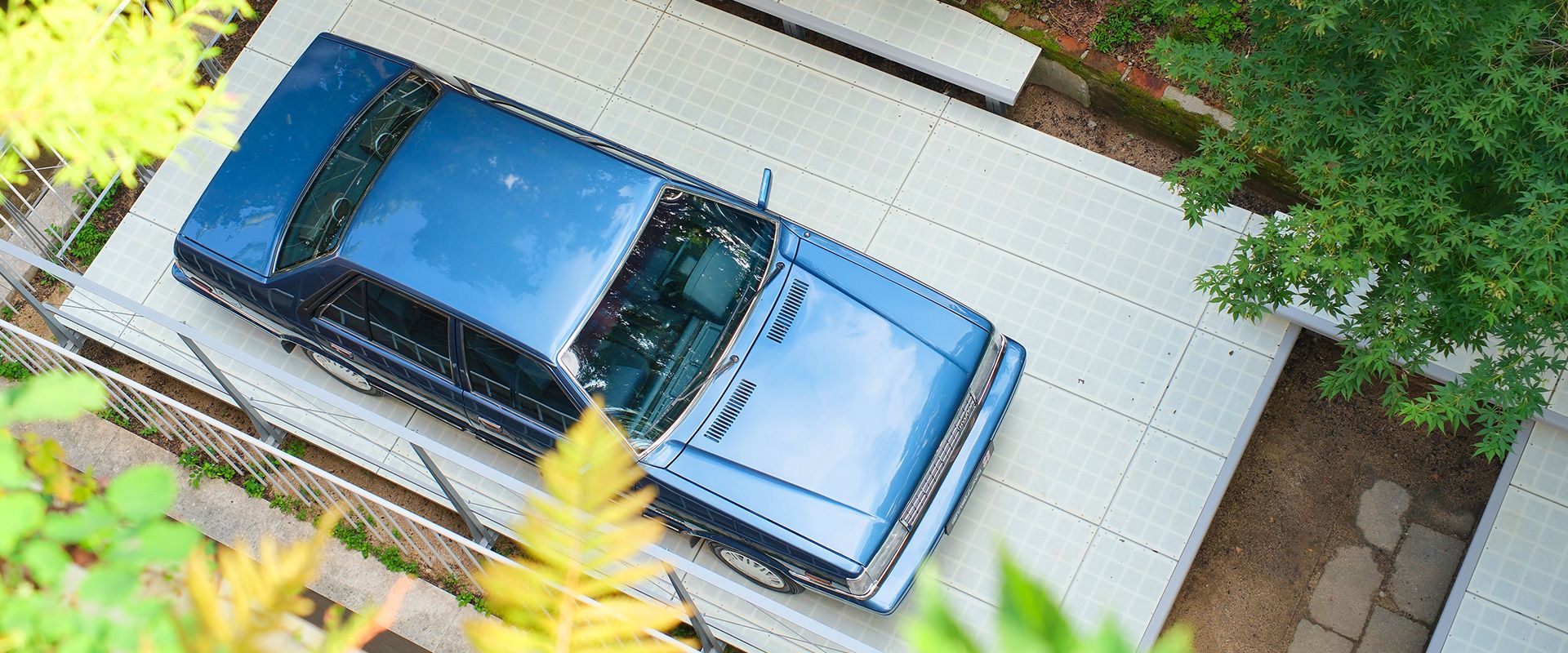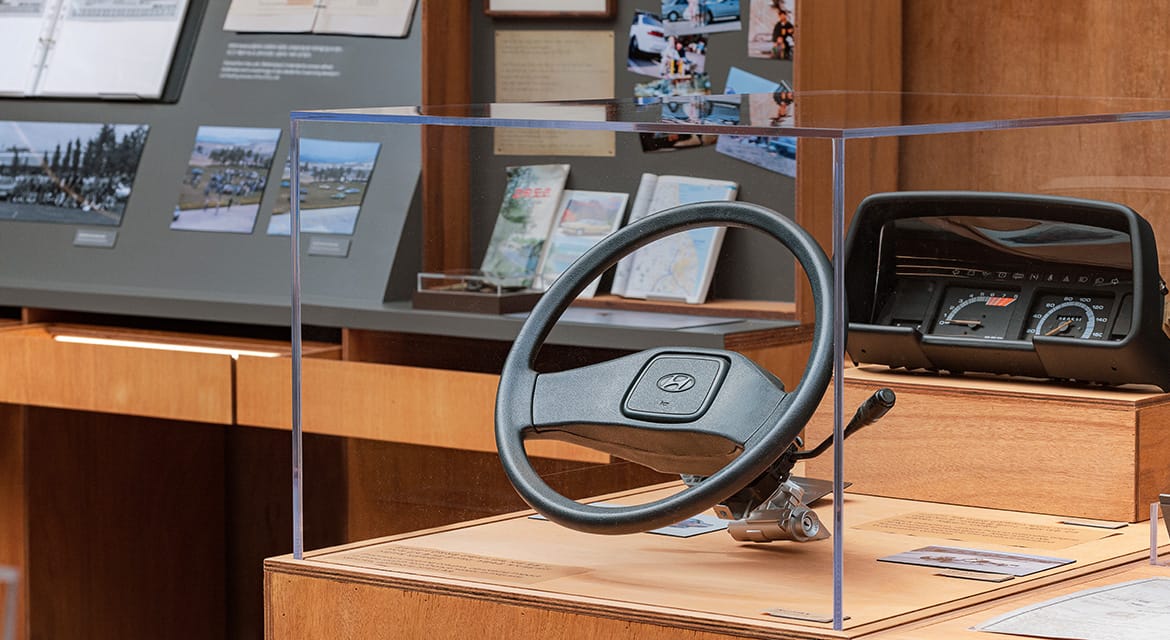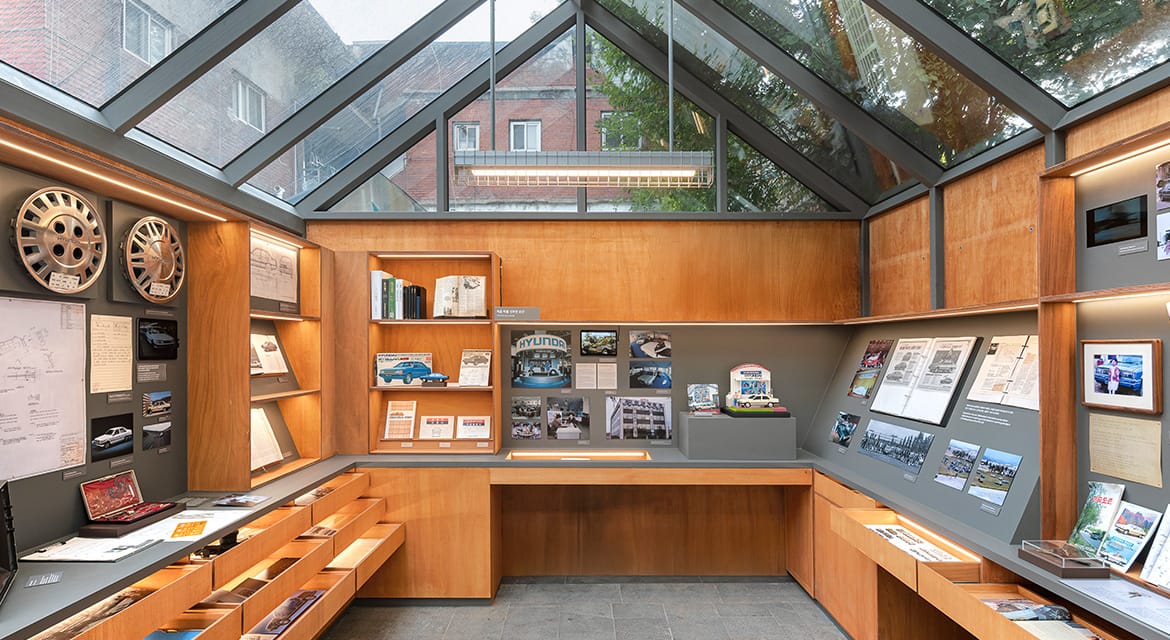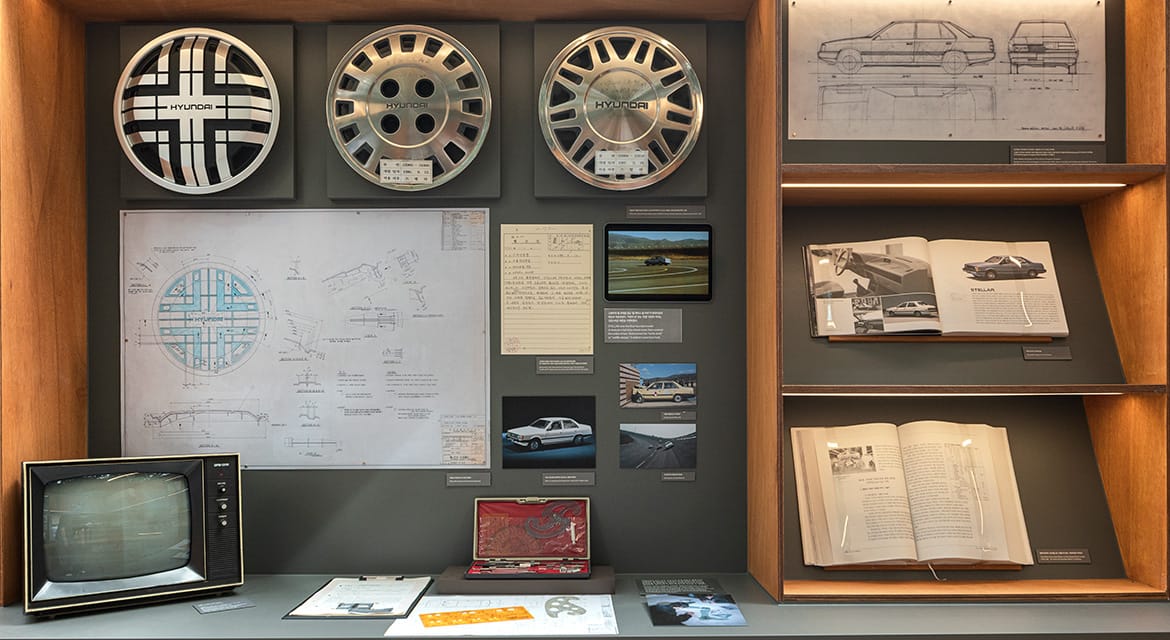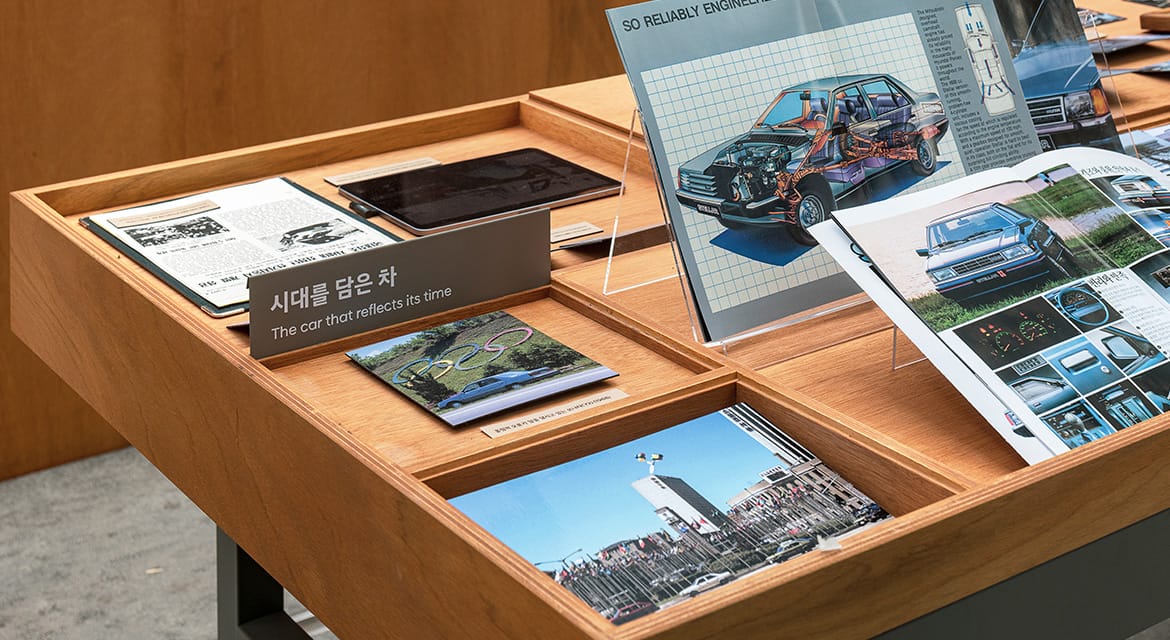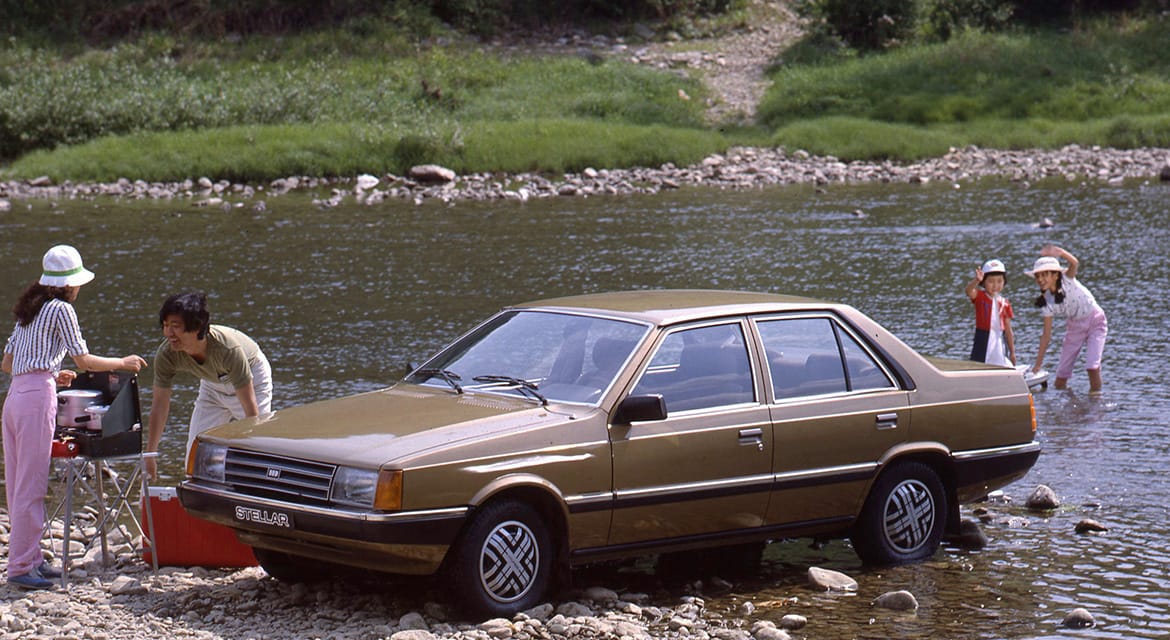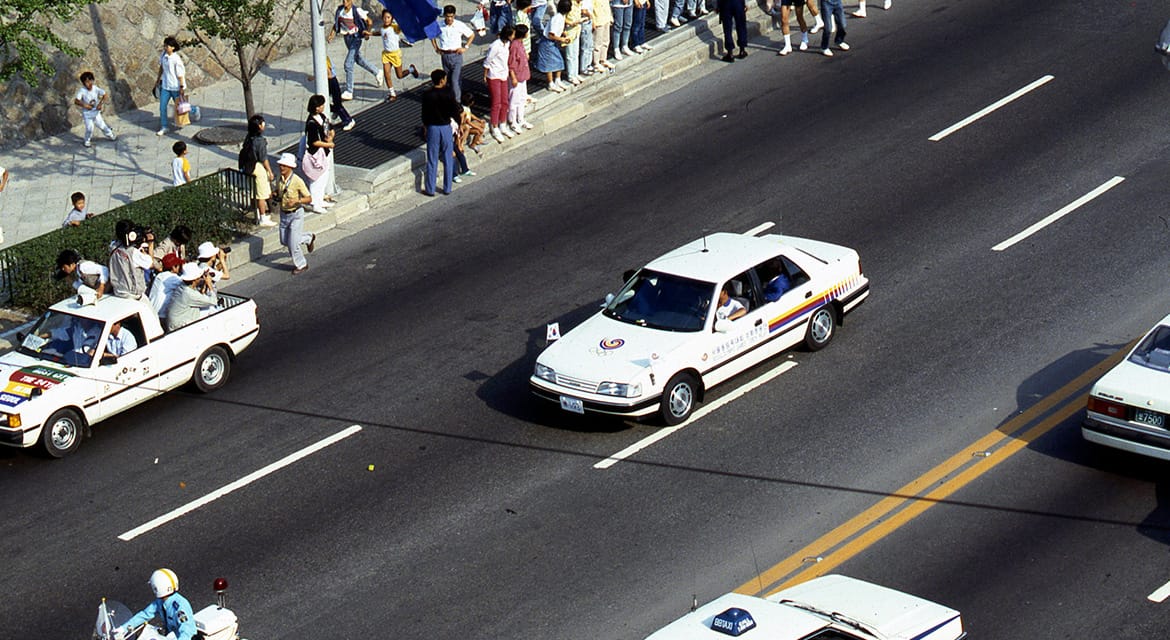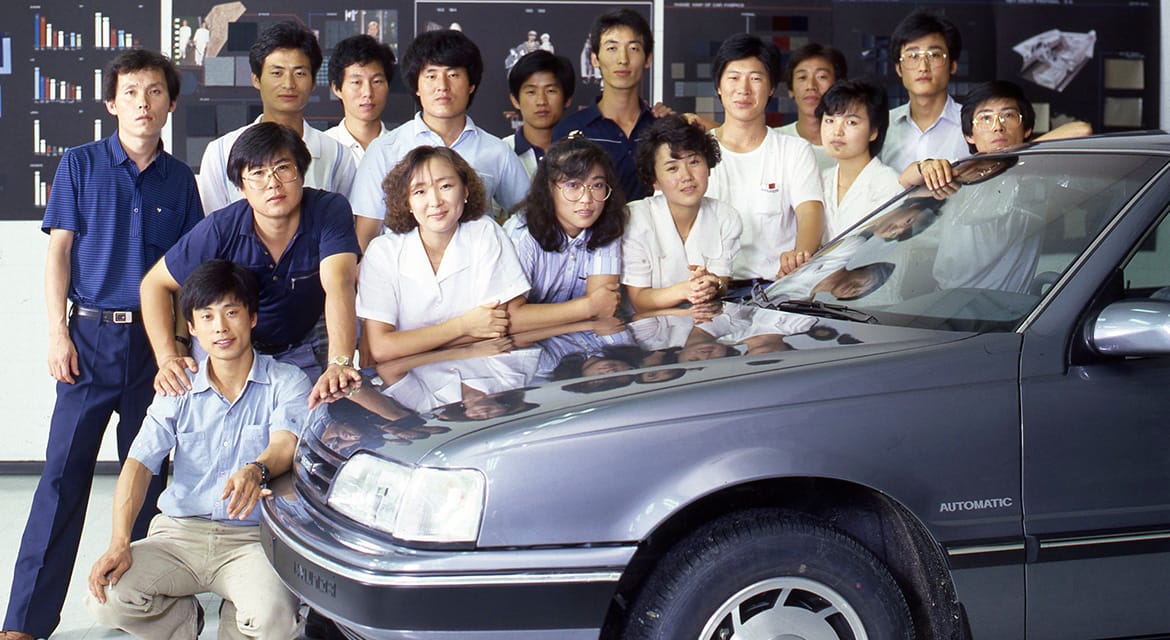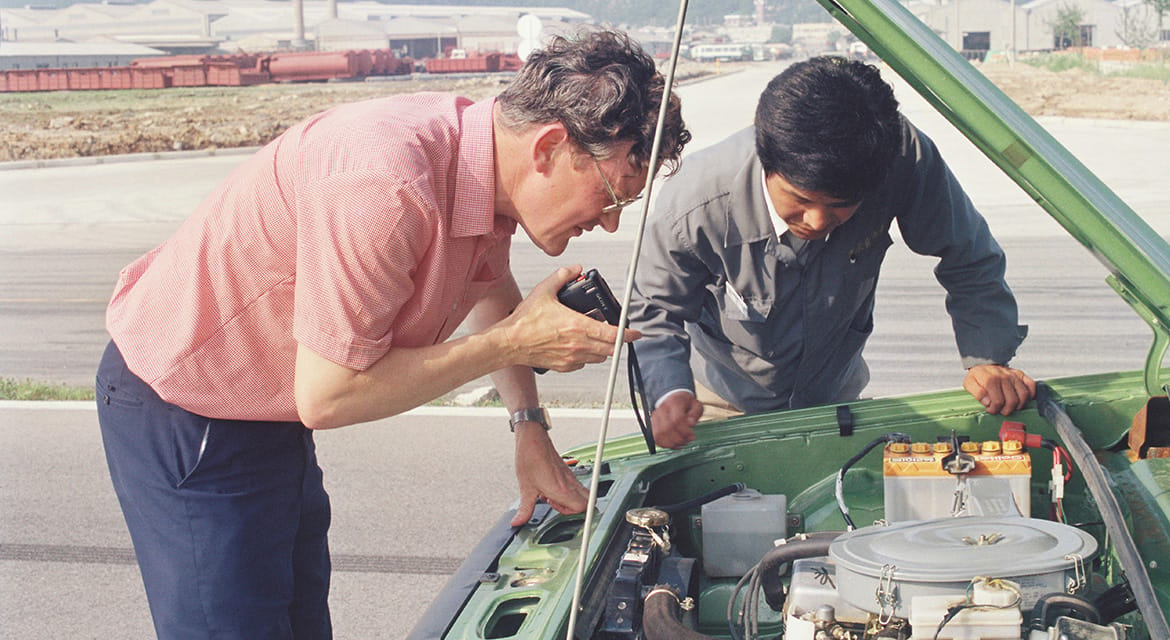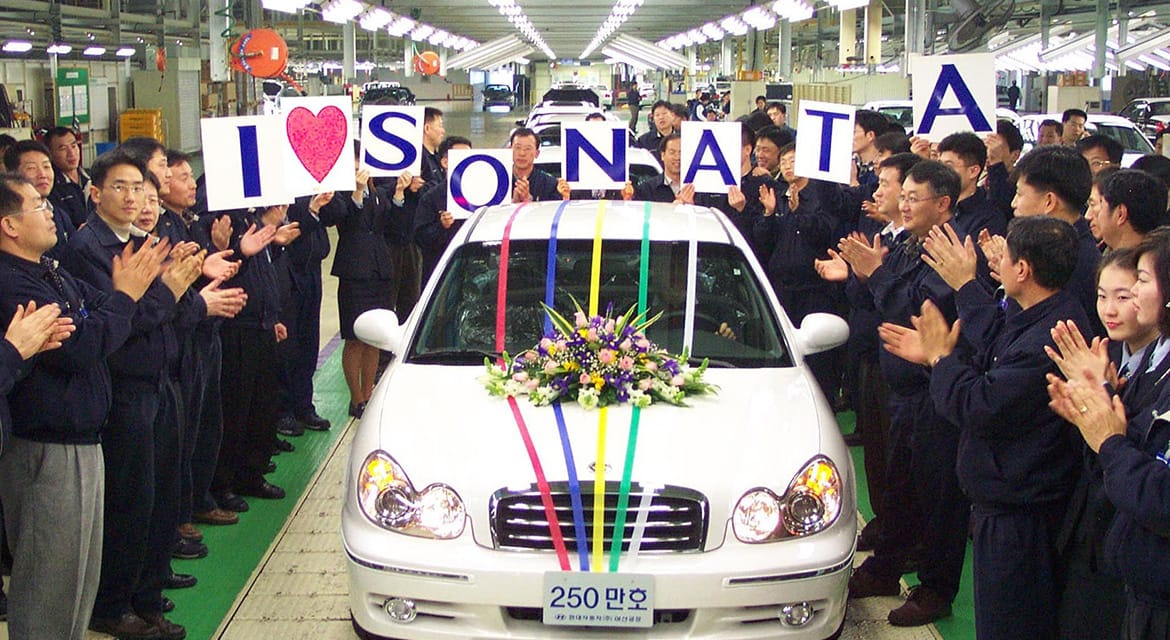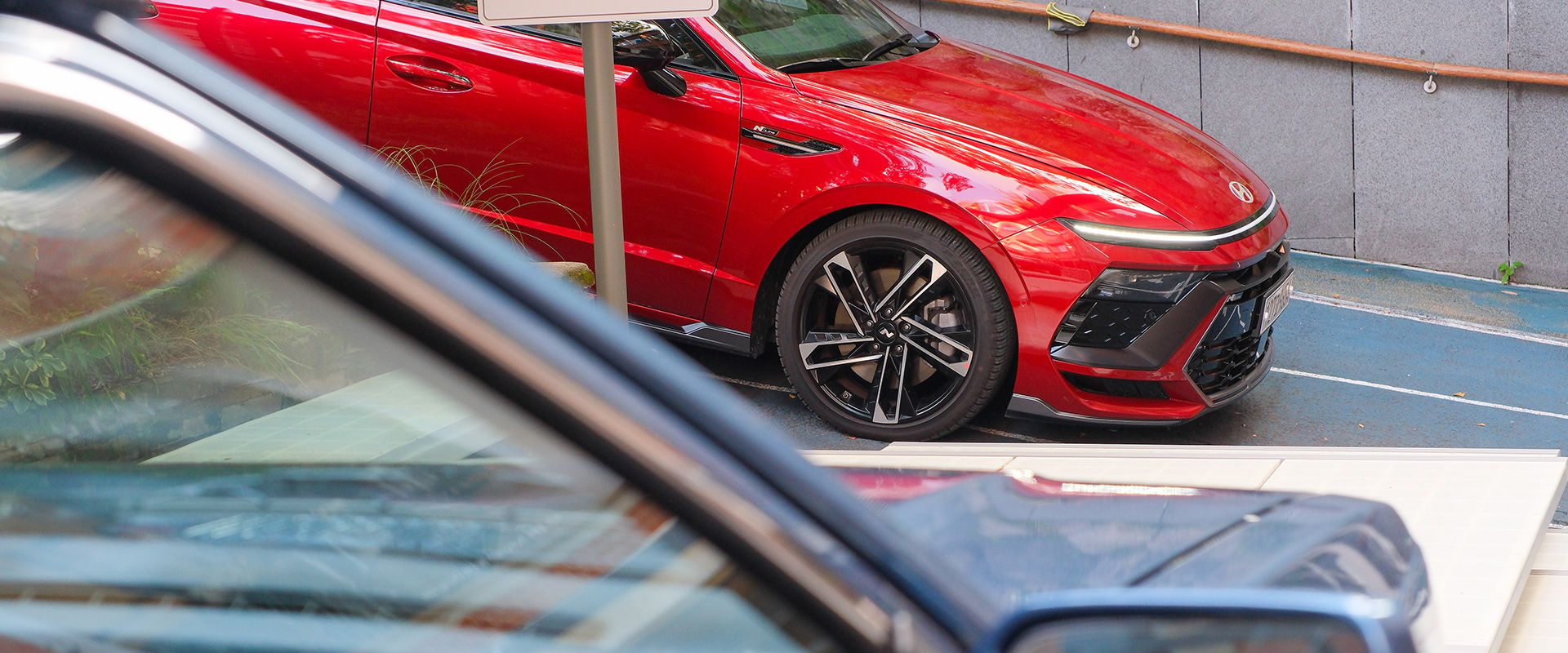Hyundai Worldwide Global Navigation
- Go to Global Distributors page
- KR
-
SearchRecommended search terms
Editorials SONATA Turns 40: A Legacy Beginning with STELLAR
Please use Safari to download the files.
On the wooded slopes of Namsan mountain sits piknic, a café and gallery that feels more like a retreat than an exhibition venue. For most of the year, its alcoves are filled with the aroma of coffee and fresh baking, the quiet hum of conversation, and the contemplative gaze of art enthusiasts immersed in its installations. But from September 25, 2025 to January 4, 2026, this tranquil space represents something else entirely: a shrine to two icons that helped define Hyundai’s ascent from local upstart to global contender — the STELLAR and the SONATA.
The approach to piknic feels almost ceremonial. A narrow walkway, framed by brutalist concrete walls and overhanging trees, guides visitors toward the entrance. Waiting outside is a glint of heritage: an immaculately restored 1988 Hyundai STELLAR, affectionately known as the ‘STELLAR 88’. For many younger visitors, it may be the first time they’ve seen a STELLAR — let alone a special-edition model built to mark Hyundai’s role as the official vehicle supplier of the 1988 Seoul Olympics.
Beloved by their owners but designed for everyday life, STELLARs served as family sedans, executive shuttles, taxis, and even police cruisers. Seeing one in pristine condition today is striking. Hyundai’s restoration project has done more than refurbish a car — it has revived a moment in time.
With its period-correct detailing, Shadow Blue Metallic paint, and matching monotone interior, this particular STELLAR stands not only as a tribute to early engineering ambition, but as a mirror to the era, the people and the relationships it served.
To call the STELLAR an icon may sound bold. After all, it was neither Hyundai’s first independently developed car — that honor belongs to the PONY — nor its longest running passenger car, a title claimed by the SONATA. But in 1983, with its Giugiaro-styled body and focus on aerodynamic efficiency, the STELLAR marked a turning point. It was Hyundai’s declaration that good design and advanced features need not be reserved for the few. Power windows and a tachometer — once small marvels — spoke of a company intent on progress.
But perhaps the STELLAR’s greatest legacy lies in what it enabled. Because in 1985, Hyundai introduced the SONATA as an upscale derivative of the STELLAR. Beneath its familiar form lay the largest-displacement engine available in Korea at the time at 2.0 liters and technologies previously unseen in the domestic market: power seats, electric mirrors, and even cruise control.
If the STELLAR kept Hyundai’s momentum going, the SONATA further elevated the brand. Each generation marked an evolution: the second-generation (Y2) model firmly established Hyundai in the United States, the third (Y3) introduced multi-link rear suspension, the seventh (LF) SONATA was Korea’s first plug-in hybrid (PHEV).
The latest model (DN8), facelifted in 2023, carries the lineage forward with its striking Seamless Horizon Lamp lightbar and panoramic curved infotainment display — symbols of a brand always reaching ahead. By August 2025, cumulative sales of the SONATA — including STELLAR — surpassed 10 million units worldwide, just in time for its 40th birthday.
Yet numbers tell only half the story. Inside piknic, the focus shifts from the cars themselves to the people who shaped them — and were shaped by them. Alongside design sketches, brochures, and R&D records sit photographs and personal memories that reveal how these models became woven into everyday life.
It’s this human narrative that the exhibition’s supporting publication — the second issue of RETRACE Magazine, titled ‘RETRACE Magazine: STELLAR & SONATA’ — brings vividly to life. Featuring 16 original essays, interviews, and columns, the content reflects not only on the technological evolution of Hyundai’s mid-size sedans, but also on the deeper emotional connections they’ve fostered over the decades.
In many ways, the exhibition is the magazine made tangible — a space where words, images, and memories converge, inviting visitors to walk through the stories that have long accompanied these cars. Because if the PONY introduced the concept of ownership for many first-time buyers, the STELLAR and SONATA, for many, introduced the concept of heading off on a weekend drive with friends; a family road-trip; the drive to college with the trunk packed and the future wide open. These cars became places where relationships were formed.
On October 18, a book talk at Hyundai Motorstudio Seoul will delve deeper into these themes, with a restored STELLAR GX displayed alongside the latest SONATA.
“The restoration of the STELLAR 88 was not simply about re-creating the past but revisiting the dedication and efforts of former employees who worked toward independent technology development,” reflects Sungwon Jee, Senior Vice President and Global Chief Marketing Officer of Hyundai Motor Company.
“We hope that STELLAR and SONATA, the models that have been beloved by customers for decades, will serve as an opportunity to appreciate the value of relationships that have stood the test of time. At Hyundai Motor, we value the relationships that we have built with our customers over the years and will continue to expand human connections through mobility in line with our brand vision of Progress for Humanity,” he added.
At piknic, surrounded by modern architecture, enveloping trees, and historical artifacts, those relationships come alive again. The STELLAR and SONATA are no longer just cars — they are memories on wheels, carrying the spirit of their era into the present.
Neil Winn
neilwinn@hyundai.com
Global PR Contents · Hyundai Motor Company
Disclaimer: Hyundai Motor Company believes the information contained herein to be accurate at the time of release. However, the company may upload new or updated information if required and assumes that it is not liable for the accuracy of any information interpreted and used by the reader.
About Hyundai Motor Company
Established in 1967, Hyundai Motor Company is present in over 200 countries with more than 120,000 employees dedicated to tackling real-world mobility challenges around the globe. Based on the brand vision ‘Progress for Humanity,’ Hyundai Motor is accelerating its transformation into a Smart Mobility Solution Provider. The company invests in advanced technologies such as robotics and Advanced Air Mobility (AAM) to bring about revolutionary mobility solutions while pursuing open innovation to introduce future mobility services. In pursuit of a sustainable future for the world, Hyundai will continue its efforts to introduce zero-emission vehicles with industry-leading hydrogen fuel cell and EV technologies.
More information about Hyundai Motor and its products can be found at:
https://www.hyundai.com/worldwide/en/ or Newsroom: Media Hub by Hyundai
Follow our Hyundai Global Newsroom Instagram channel @hyundai_mediahub
